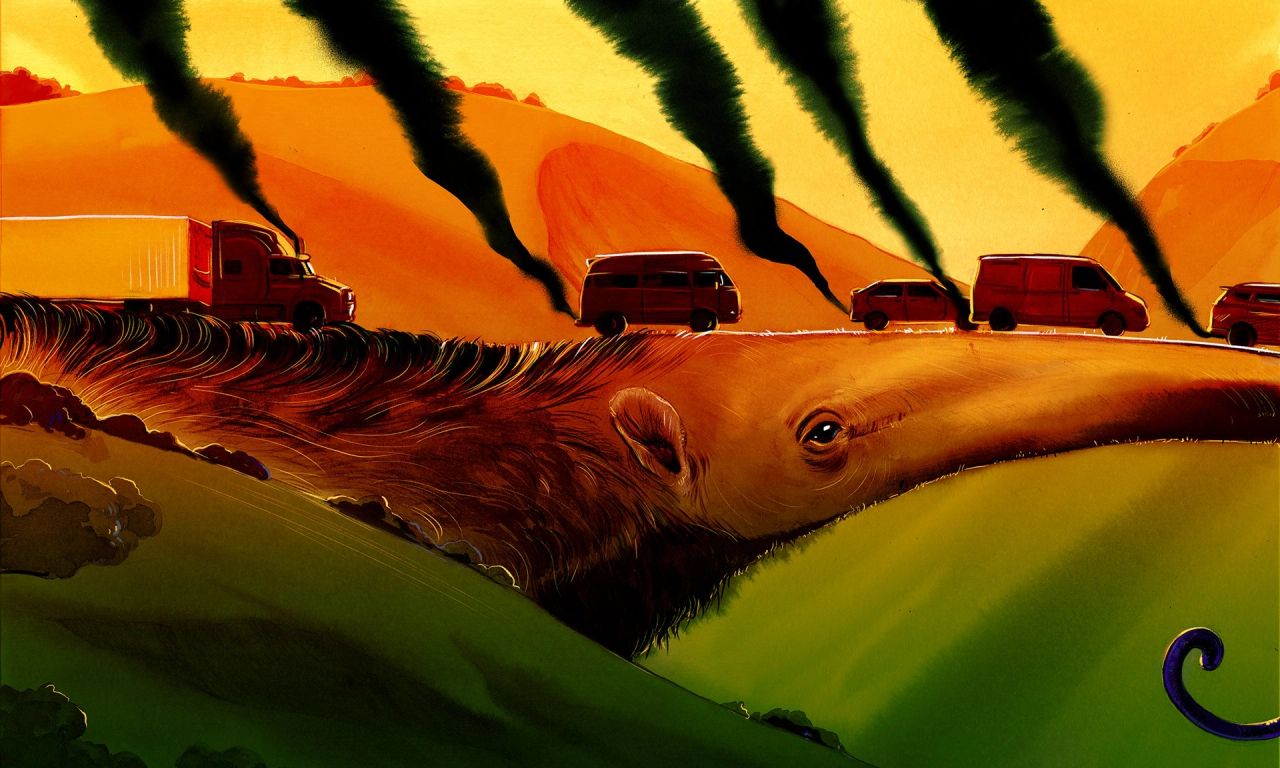
Story by Ben Goldfarb, The Atlantic, November 26, 2019
Among Salvador Dalí’s many obsessions—sex, time, death, himself—one of the longest-lasting was giant anteaters. The Spanish painter began sketching the creatures around 1930, and decades later strolled the streets of Paris with a leashed live specimen. A surrealist couldn’t have chosen a more appropriate pet. Massive front claws force anteaters to walk on their knuckles, giving them the shuffling gait of a gorilla holding a fistful of steak knives. Entirely toothless, Myrmecophaga tridactyla possesses a two-foot-long tongue, an organ so prodigious that it’s anchored to the sternum and furls, Fruit Roll-Ups–style, into its owner’s tubular mouth. Anteaters use their tongue to probe anthills and termite mounds like moths at an orchid, lapping up prey with a sticky lacquer of saliva. These sieges are brief, ending when the insects flee or sting. Giant anteaters are thus rotational grazers, endlessly circuiting their bug-filled pastures. A few termites here, a few there, and by day’s end they’ve slurped down 30,000 bugs.
To wander in the 21st century, unfortunately, is to court death. The giant anteater’s range, which runs from Honduras to Argentina, is bisected by BR-262, the highway that cuts across the Brazilian state of Mato Grosso do Sul as it winds from the Bolivian border to the Atlantic Ocean. Along the way, the road knifes through two ecosystems: the Pantanal, Earth’s largest tropical wetland, and the Cerrado, the savanna that covers more than 20 percent of Brazil. Eucalyptus, iron, cattle, and cocaine pulse through this infrastructural aorta, transported in trucks against which soft-bodied, naive animals stand no chance. Researchers who have tallied BR-262’s roadkill consider the highway Brazil’s deadliest, and one of the worst in the world.
When I drove BR-262 with a Brazilian wildlife veterinarian named Mario Alves one dry morning in July, we found that it had claimed yet another giant anteater. The victim, six feet from her long snout to her massive tail, lay sprawled on the shoulder in a state of advanced decomposition. Her fur sloughed from her sun-blackened skin. Botflies whirred. Alves knelt, scissors in his gloved hand, and snipped the tip of one ear, stuffing the scrap into a vial for genetic analysis. I ogled the long broom of a tail, the appendage that this anteater had once wrapped around herself and her pup like a blanket against the chilly Cerrado nights. Now it was limp.
The anteater’s pennantlike tail furnishes its Portuguese name—tamanduá-bandeira, the flag anteater. It also provides the moniker of the research initiative that had brought us to BR-262: Projeto Bandeiras e Rodovias, or Anteaters and Highways, a multipronged examination of how Brazil’s metastasizing road network affects one of its most charismatic mammals.
Continue reading here.

